 Canada’s government has moved quickly to protect and strengthen the sectors most affected by U.S. tariffs – introducing new measures to help workers gain new skills, support businesses as they modernise and diversify, and boost domestic demand for Canadian goods. Building on previously announced measures to help transform the Canadian steel and softwood lumber industries, the following new initiatives were announced:
Canada’s government has moved quickly to protect and strengthen the sectors most affected by U.S. tariffs – introducing new measures to help workers gain new skills, support businesses as they modernise and diversify, and boost domestic demand for Canadian goods. Building on previously announced measures to help transform the Canadian steel and softwood lumber industries, the following new initiatives were announced:
- Further limit foreign steel imports
- Make it easier to build with Canadian steel and Canadian lumber
- Canada will work with railway companies to cut freight rates for transporting Canadian steel and lumber interprovincially by 50%.
- To maximise the use of Canadian softwood lumber in housing, Build Canada Homes will prioritise shovel-ready, multi-year projects.
- Canada will implement our Buy Canadian Policy later this year, which requires that all contracts worth over $25 million prioritise Canadian materials – including steel and lumber.
- Increase protections for Canadian steel and lumber workers and businesses
- Canada will earmark more than $100 million to provide support in all sectors with an active Work-Sharing agreement.
- Canada will provide an additional $500 million to the BDC Softwood Lumber Guarantee Program.
- For softwood lumber firms facing liquidity pressures, Canada will earmark $500 million under the Large Enterprise Tariff Loan facility.
- Canada will launch a Canadian Forest Sector Transformation Task Force.


 Help is on the way for Canadian steel producers and those in softwood lumber affected by the ongoing trade dispute with the United States. Multiple senior government sources confirmed that Prime Minister Mark Carney will announce measures on Wednesday to protect the steel industry, which has been hit with 50 per cent tariffs by the Trump administration. The measures include cutting limits to the amount of steel that can be imported into the country from nations that do not have a free trade agreement with Canada. …The Carney government will also increase the total money available to struggling softwood lumber companies to $1.2 billion. It’s a $500-million increase from the previously announced Softwood Lumber Development Program, which gives companies access to government-backed loans. …Trade talks between the two countries have been put on pause for the last month.
Help is on the way for Canadian steel producers and those in softwood lumber affected by the ongoing trade dispute with the United States. Multiple senior government sources confirmed that Prime Minister Mark Carney will announce measures on Wednesday to protect the steel industry, which has been hit with 50 per cent tariffs by the Trump administration. The measures include cutting limits to the amount of steel that can be imported into the country from nations that do not have a free trade agreement with Canada. …The Carney government will also increase the total money available to struggling softwood lumber companies to $1.2 billion. It’s a $500-million increase from the previously announced Softwood Lumber Development Program, which gives companies access to government-backed loans. …Trade talks between the two countries have been put on pause for the last month.
 President Donald Trump has yet to follow through on his threat to impose an additional 10 percent tariff on Canadian imports, four weeks after he halted “all trade negotiations” over an anti-tariff ad the province of Ontario ran. Trump’s announcement had Canadian exporters preparing for a worst-case scenario: a sweeping levy layered on top of existing double-digit duties. …The White House did not say whether it still plans to impose the tariff when asked for comment. But a separate US official suggested the Trump administration had opted to hold off on additional duties — which would have sent tariffs on Canadian goods to 45% — and instead continue to dangle the threat as the two sides gear up for future talks. “The Canadians know what’s on the table,” said the official. Volpe said a personal intervention by Carney in Asia last month may have helped matters, too.
President Donald Trump has yet to follow through on his threat to impose an additional 10 percent tariff on Canadian imports, four weeks after he halted “all trade negotiations” over an anti-tariff ad the province of Ontario ran. Trump’s announcement had Canadian exporters preparing for a worst-case scenario: a sweeping levy layered on top of existing double-digit duties. …The White House did not say whether it still plans to impose the tariff when asked for comment. But a separate US official suggested the Trump administration had opted to hold off on additional duties — which would have sent tariffs on Canadian goods to 45% — and instead continue to dangle the threat as the two sides gear up for future talks. “The Canadians know what’s on the table,” said the official. Volpe said a personal intervention by Carney in Asia last month may have helped matters, too.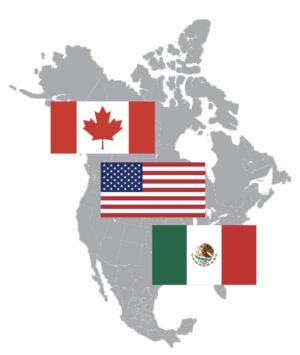 WASHINGTON — American industries ranging from whiskey makers and Wisconsin dairy producers to steel and automobile associations are weighing in on the future of the Canada-U.S.-Mexico Agreement on trade. The continental trade pact, known as CUSMA, is up for mandatory review next year and the Office of the United States Trade Representative has been collecting input on the changes it should consider. CUSMA has been rattled by U.S. President Trump’s massive tariff agenda and many of the submissions urged the administration to restore duty-free trade. The Can Manufacturers Institute wrote to the Trump administration saying steel and aluminum tariffs on Canada are making their products more expensive and causing prices in grocery stores to increase. …The United States Steel Corporation said tariffs on that metal should remain indefinitely. The submissions provide insight into areas that could become irritants in looming negotiations on the critical trilateral trade pact.
WASHINGTON — American industries ranging from whiskey makers and Wisconsin dairy producers to steel and automobile associations are weighing in on the future of the Canada-U.S.-Mexico Agreement on trade. The continental trade pact, known as CUSMA, is up for mandatory review next year and the Office of the United States Trade Representative has been collecting input on the changes it should consider. CUSMA has been rattled by U.S. President Trump’s massive tariff agenda and many of the submissions urged the administration to restore duty-free trade. The Can Manufacturers Institute wrote to the Trump administration saying steel and aluminum tariffs on Canada are making their products more expensive and causing prices in grocery stores to increase. …The United States Steel Corporation said tariffs on that metal should remain indefinitely. The submissions provide insight into areas that could become irritants in looming negotiations on the critical trilateral trade pact.
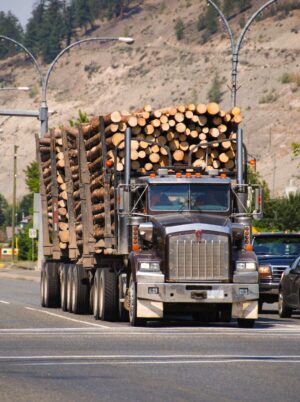 The looming closure of a lumber mill in central BC is highlighting the forestry industry’s challenges in accessing an economically viable timber supply — with one academic urging an “emergency response” to deal with it. West Fraser Timber announced it would shut its mill in 100 Mile House by the end of the year. BC’s forestry industry has taken major hits over the last few years, as escalating US duties on softwood lumber imports have piled atop challenges like a major beetle infestation and wildfires, leading to thousands of jobs lost. …UBC professor Gary Bull explained that to have an “economically viable fibre supply,” it needs to make sense financially for a company to transport logs from a forest to its mill. And the viability is complicated by the fluctuating price of lumber. …Bull estimated that insect outbreaks and wildfires have contributed to a 50 to 60 per cent reduction in available fibre near 100 Mile House.
The looming closure of a lumber mill in central BC is highlighting the forestry industry’s challenges in accessing an economically viable timber supply — with one academic urging an “emergency response” to deal with it. West Fraser Timber announced it would shut its mill in 100 Mile House by the end of the year. BC’s forestry industry has taken major hits over the last few years, as escalating US duties on softwood lumber imports have piled atop challenges like a major beetle infestation and wildfires, leading to thousands of jobs lost. …UBC professor Gary Bull explained that to have an “economically viable fibre supply,” it needs to make sense financially for a company to transport logs from a forest to its mill. And the viability is complicated by the fluctuating price of lumber. …Bull estimated that insect outbreaks and wildfires have contributed to a 50 to 60 per cent reduction in available fibre near 100 Mile House.
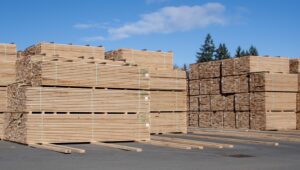 Pierre Poilievre says he’d succeed where Prime Minister Mark Carney has failed, and that New Brunswick’s softwood lumber sector would quickly get a “tariff-free” deal with the US if he was in charge. …Ottawa responded by releasing a financial aid package for the industry that includes up to $700 million in federal loans, “$500 million to supercharge product and market diversification. …Poilievre said that “one of my top priorities as prime minister will be to go down to Washington, get a deal on lumber, make the pitch that they will get more affordable homes if we can get tariff-free access to their market.” …MP Dominic LeBlanc sent a statement…. “In the coming weeks, we will take further urgent action, building on the significant support for the sector announced on August 5, 2025. In addition, Build Canada Homes, a new federal agency that will build affordable housing at scale, will prioritize the use of Canadian-made materials. [Access may require a Telegraph-Journal subscription]
Pierre Poilievre says he’d succeed where Prime Minister Mark Carney has failed, and that New Brunswick’s softwood lumber sector would quickly get a “tariff-free” deal with the US if he was in charge. …Ottawa responded by releasing a financial aid package for the industry that includes up to $700 million in federal loans, “$500 million to supercharge product and market diversification. …Poilievre said that “one of my top priorities as prime minister will be to go down to Washington, get a deal on lumber, make the pitch that they will get more affordable homes if we can get tariff-free access to their market.” …MP Dominic LeBlanc sent a statement…. “In the coming weeks, we will take further urgent action, building on the significant support for the sector announced on August 5, 2025. In addition, Build Canada Homes, a new federal agency that will build affordable housing at scale, will prioritize the use of Canadian-made materials. [Access may require a Telegraph-Journal subscription]
 KINCHELOE, Michigan — A unique manufacturing facility opened in September along a CN line in Kincheloe, Michigan. Located in the Chippewa County Industrial Park in Michigan’s upper peninsula, the $7.3 million, 20,000-square foot facility serves as a transportation and logistics hub for wood and lumber dealer Maple Transport. The facility features a rail spur and is situated near Interstate 75. The new manufacturing hub will support Michigan’s $20 billion forest products industry and serve other new or expanding businesses, Maple Transport officials say. Project funding included $5.8 million from the U.S. Economic Development Administration, $1.25 million in matching dollars from the Michigan Economic Development Corp., and contributions from the Chippewa County Economic Development Corp. and a Strategic Site Readiness Program grant. Construction began in spring 2024 on the manufacturing facility, which Maple Transport will use to ship wood products, CN officials said in an email. The facility will be served by both CN and trucks.
KINCHELOE, Michigan — A unique manufacturing facility opened in September along a CN line in Kincheloe, Michigan. Located in the Chippewa County Industrial Park in Michigan’s upper peninsula, the $7.3 million, 20,000-square foot facility serves as a transportation and logistics hub for wood and lumber dealer Maple Transport. The facility features a rail spur and is situated near Interstate 75. The new manufacturing hub will support Michigan’s $20 billion forest products industry and serve other new or expanding businesses, Maple Transport officials say. Project funding included $5.8 million from the U.S. Economic Development Administration, $1.25 million in matching dollars from the Michigan Economic Development Corp., and contributions from the Chippewa County Economic Development Corp. and a Strategic Site Readiness Program grant. Construction began in spring 2024 on the manufacturing facility, which Maple Transport will use to ship wood products, CN officials said in an email. The facility will be served by both CN and trucks.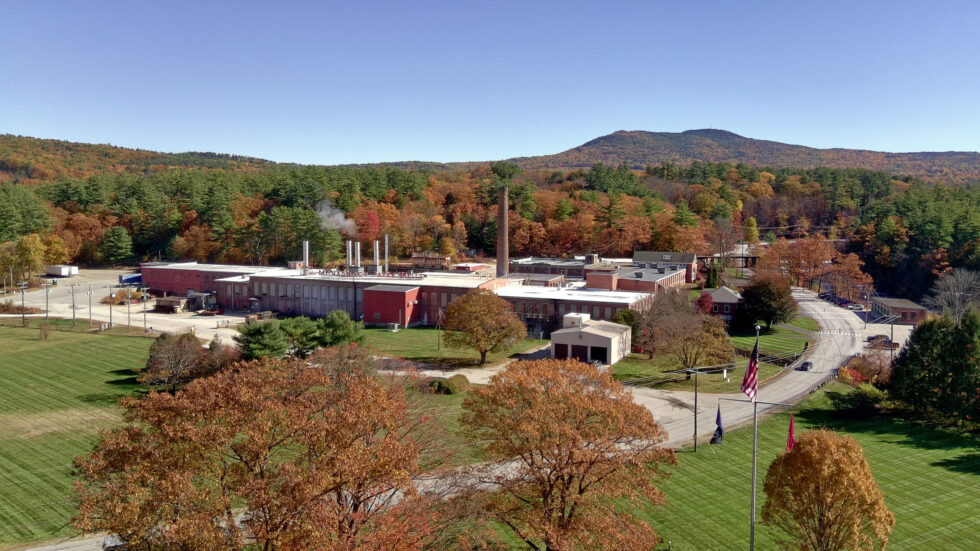

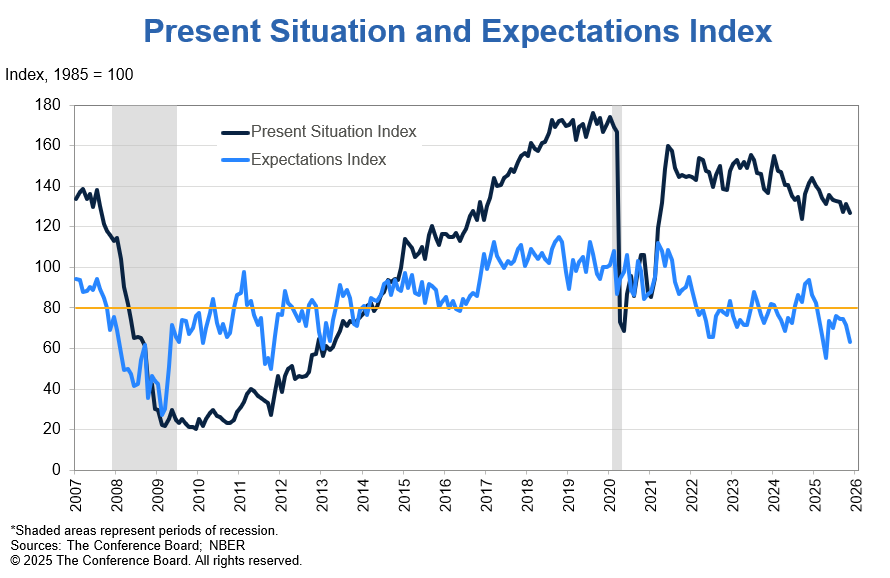




 China’s recent environmental policy shift is transforming the global recycled pulp market. After years of tightening restrictions on solid waste imports, China has now expanded its scope even further by banning certain types of recycled pulp. This development highlights the country’s ongoing goal to eliminate “foreign garbage” and improve the quality and sustainability of its locally produced paper. …In January 2021, China fully implemented the National Sword policy — a sweeping ban on most solid waste imports, including unsorted and recycled paper. …In October 2025, China took its environmental agenda a step further by targeting specific types of recycled pulp — particularly those processed through dry-milling techniques. …The new restrictions have rippled across the global paper recycling supply chain. Exporters that previously relied on China’s massive demand are scrambling to find alternative markets, while Chinese paper producers face delays and shortages in pulp supply.
China’s recent environmental policy shift is transforming the global recycled pulp market. After years of tightening restrictions on solid waste imports, China has now expanded its scope even further by banning certain types of recycled pulp. This development highlights the country’s ongoing goal to eliminate “foreign garbage” and improve the quality and sustainability of its locally produced paper. …In January 2021, China fully implemented the National Sword policy — a sweeping ban on most solid waste imports, including unsorted and recycled paper. …In October 2025, China took its environmental agenda a step further by targeting specific types of recycled pulp — particularly those processed through dry-milling techniques. …The new restrictions have rippled across the global paper recycling supply chain. Exporters that previously relied on China’s massive demand are scrambling to find alternative markets, while Chinese paper producers face delays and shortages in pulp supply.


 The return of cold and snow at the close of the year typically signal the end of the wildfire season. …Zombie fires, sometimes betrayed by a plume of steam emerging from the bubbling ground in the frozen forest, were once a rare occurrence in the boreal regions that stretch across the far north through Siberia, Canada and Alaska. But in a rapidly heating world, they are becoming increasingly common. The overwintering burns are small – and often hard to detect – but they are transforming fires into multi-year events. …“It is a massive problem,” says Lori Daniels, a professor at the University of BC. Current estimates show that only about 15% of the northern hemisphere is underlain by permafrost, yet these frozen soils contain roughly twice as much carbon than is now in the atmosphere. By burning slowly and at a lower temperature, they release vastly more particulate pollution and greenhouse gas emissions than flaming fires.
The return of cold and snow at the close of the year typically signal the end of the wildfire season. …Zombie fires, sometimes betrayed by a plume of steam emerging from the bubbling ground in the frozen forest, were once a rare occurrence in the boreal regions that stretch across the far north through Siberia, Canada and Alaska. But in a rapidly heating world, they are becoming increasingly common. The overwintering burns are small – and often hard to detect – but they are transforming fires into multi-year events. …“It is a massive problem,” says Lori Daniels, a professor at the University of BC. Current estimates show that only about 15% of the northern hemisphere is underlain by permafrost, yet these frozen soils contain roughly twice as much carbon than is now in the atmosphere. By burning slowly and at a lower temperature, they release vastly more particulate pollution and greenhouse gas emissions than flaming fires. The new allowable annual cut (AAC) for Tree Farm Licence (TFL) 49 near Vernon has been chopped. The cut, which is the maximum amount of timber that can be harvested each year, is now 150,500 cubic metres, and takes effect immediately. That’s a 26.2% reduction from the previous AAC. “That decision reflects a return to sustainable harvest levels following wildfire impacts in 2021 and 2023,” said the
The new allowable annual cut (AAC) for Tree Farm Licence (TFL) 49 near Vernon has been chopped. The cut, which is the maximum amount of timber that can be harvested each year, is now 150,500 cubic metres, and takes effect immediately. That’s a 26.2% reduction from the previous AAC. “That decision reflects a return to sustainable harvest levels following wildfire impacts in 2021 and 2023,” said the 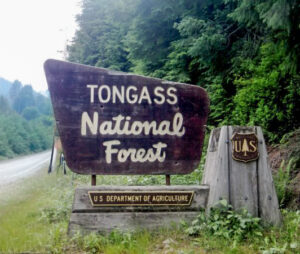 It was no surprise that everyone on the timber panel at this month’s Alaska Resource Development Council conference had the same message: The industry needs a larger supply of trees to cut. And a steady, bankable supply, said Joe Young, of Tok, who started Young’s Timber in Alaska’s Interior more than 30 years ago. …The Nov. 13 industry panel at the annual conference held in Anchorage also talked about demand for their product and the challenges in meeting that demand. Juneau attorney Jim Clark, said the Trump administration’s move to rescind the Roadless Rule, which has been around since 2001, could help open areas of the Tongass National Forest to logging. …The lack of timber sales, financial pressures and opposition from conservation groups have knocked down Alaska timber industry jobs from almost 4,000 in 1990 to about 700 in 2015 and just 360 in 2024, according to Alaska Department of Labor statistics.
It was no surprise that everyone on the timber panel at this month’s Alaska Resource Development Council conference had the same message: The industry needs a larger supply of trees to cut. And a steady, bankable supply, said Joe Young, of Tok, who started Young’s Timber in Alaska’s Interior more than 30 years ago. …The Nov. 13 industry panel at the annual conference held in Anchorage also talked about demand for their product and the challenges in meeting that demand. Juneau attorney Jim Clark, said the Trump administration’s move to rescind the Roadless Rule, which has been around since 2001, could help open areas of the Tongass National Forest to logging. …The lack of timber sales, financial pressures and opposition from conservation groups have knocked down Alaska timber industry jobs from almost 4,000 in 1990 to about 700 in 2015 and just 360 in 2024, according to Alaska Department of Labor statistics.
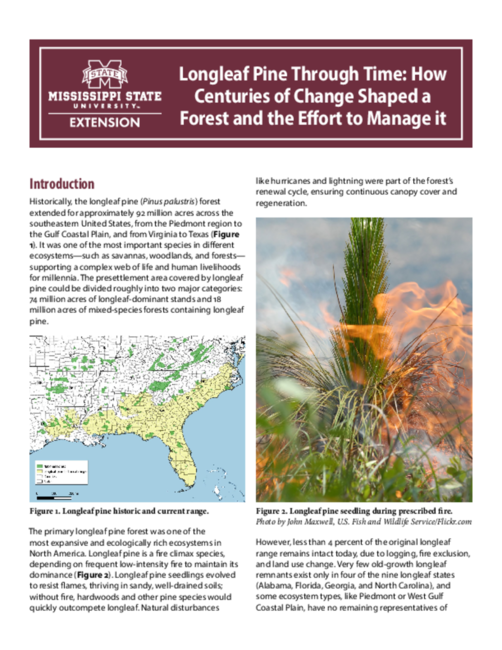


 A new
A new 

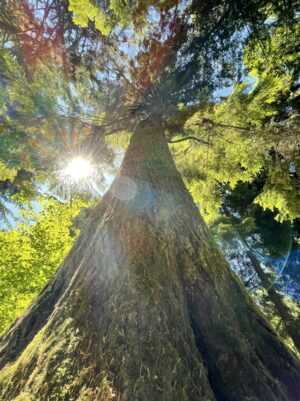 While the summit launched new financial instruments and strengthened the recognition of Indigenous rights, the final binding text is conspicuously silent on the one commitment that matters most right now: a concrete, mandatory roadmap to halt deforestation. …The Brazilian Presidency pushed hard for two ambitious roadmaps: one to phase out fossil fuels and one to halt deforestation. The strategy was to link them, acknowledging the obvious: we cannot save the Amazon if the world keeps warming. …The UN Framework Convention on Climate Change process proved unable to digest the complexity of the forest–climate nexus. We have effectively moved from a consensus-based approach to a plurilateral one, where progress rests on voluntary clubs of nations rather than global law. …If the political outcome disappointed, the financial and rights-based elements provide a measure of hope: The Tropical Forests Forever Faculty—a mechanism that pays nations for standing forests as an asset class, not just for avoided deforestation.
While the summit launched new financial instruments and strengthened the recognition of Indigenous rights, the final binding text is conspicuously silent on the one commitment that matters most right now: a concrete, mandatory roadmap to halt deforestation. …The Brazilian Presidency pushed hard for two ambitious roadmaps: one to phase out fossil fuels and one to halt deforestation. The strategy was to link them, acknowledging the obvious: we cannot save the Amazon if the world keeps warming. …The UN Framework Convention on Climate Change process proved unable to digest the complexity of the forest–climate nexus. We have effectively moved from a consensus-based approach to a plurilateral one, where progress rests on voluntary clubs of nations rather than global law. …If the political outcome disappointed, the financial and rights-based elements provide a measure of hope: The Tropical Forests Forever Faculty—a mechanism that pays nations for standing forests as an asset class, not just for avoided deforestation. Brazil’s COP30 presidency pushed through a compromise climate deal on Saturday that would boost finances for poor nations coping with global warming but omitted any mention of the fossil fuels driving it. In securing the accord, Brazil had attempted to demonstrate global unity in addressing climate change impacts even after the world’s biggest historic emitter, the United States, declined to send an official delegation. But the agreement, which landed in overtime after two weeks of contentious negotiations in the Amazon city of Belém, exposed deep rifts over how future climate action should be pursued. …After tense overnight negotiations, the EU agreed on Saturday morning not to block a final deal but said it did not agree with the conclusion. …Panama’s climate negotiator, Juan Carlos Monterrey Gómez, said “A climate decision that cannot even say ‘fossil fuels’ is not neutrality, it is complicity. And what is happening here transcends incompetence,” he said.
Brazil’s COP30 presidency pushed through a compromise climate deal on Saturday that would boost finances for poor nations coping with global warming but omitted any mention of the fossil fuels driving it. In securing the accord, Brazil had attempted to demonstrate global unity in addressing climate change impacts even after the world’s biggest historic emitter, the United States, declined to send an official delegation. But the agreement, which landed in overtime after two weeks of contentious negotiations in the Amazon city of Belém, exposed deep rifts over how future climate action should be pursued. …After tense overnight negotiations, the EU agreed on Saturday morning not to block a final deal but said it did not agree with the conclusion. …Panama’s climate negotiator, Juan Carlos Monterrey Gómez, said “A climate decision that cannot even say ‘fossil fuels’ is not neutrality, it is complicity. And what is happening here transcends incompetence,” he said.